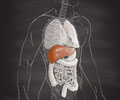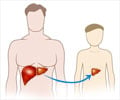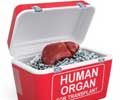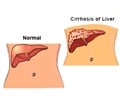A simple score can predict liver failure risk, aiding early intervention.

Evidence-based incorporation of key parameters into MELD score for acute-on-chronic liver failure
Go to source) “ACLF presents unique challenges due to its rapid progression and high mortality rates,” said Dr. Yu Shi, senior researcher at Zhejiang University and one of the study's lead authors. “Our goal was to create a model that addresses the limitations of existing prognostic tools, providing clinicians with a more reliable method to assess risk and tailor interventions.”
‘A new scoring system could revolutionize #liverdisease prognosis! CATCH-LIFE-MELD might predict survival better and help doctors identify patients needing urgent #liver_transplants.’





The Model for End-Stage Liver Disease (MELD) score has long been used to prioritize organ transplants and assess liver disease severity. However, its effectiveness in predicting ACLF outcomes is limited. The CATCH-LIFE-MELD score improves on this by incorporating three additional parameters—patient age, neutrophil count (an indicator of inflammation), and hepatic encephalopathy grade (a measure of brain dysfunction). This refined tool was tested in over 750 patients across two large cohorts, demonstrating superior predictive accuracy for 28- and 90-day mortality compared to traditional models. It also remained robust across subgroups, including patients with hepatitis B, cirrhosis, and varying degrees of organ failure.
What is Acute-on-Chronic Liver Failure
ACLF is a severe complication of chronic liver disease, marked by rapid organ failure and a high risk of death. While liver transplantation is a potential lifesaver, the shortage of donor organs necessitates accurate risk stratification to prioritize care. The CATCH-LIFE-MELD score’s enhanced precision could improve patient outcomes and resource allocation.The model also has implications for global health. “Since the parameters we used are commonly measured in clinical settings, the CATCH-LIFE-MELD score can be easily implemented worldwide, including in low-resource areas,” said Dr. Ruoqi Zhou, another lead researcher.
While this model has been validated in Asian populations, predominantly those with hepatitis B-related liver failure, further studies are planned to test its applicability to Western cohorts, where alcohol-related liver disease is more prevalent.
Advertisement
Reference:
- Evidence-based incorporation of key parameters into MELD score for acute-on-chronic liver failure - (https://egastroenterology.bmj.com/content/2/3/e100101)















